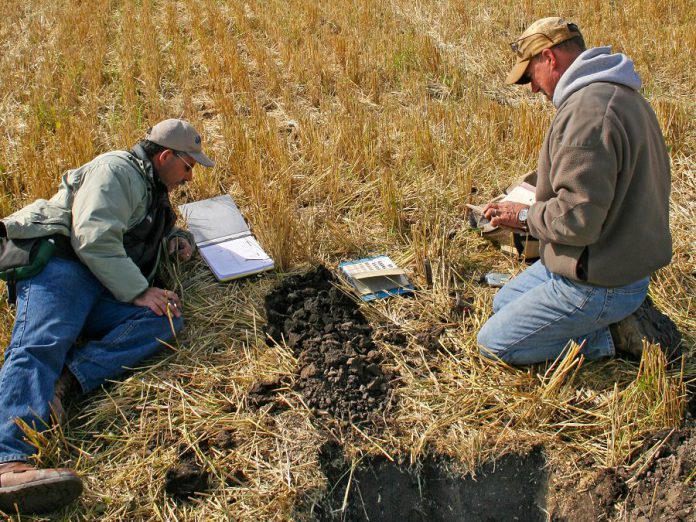
Anyone who enjoys gardening knows there are some very basic elements required to produce healthy plants. These include adequate light, appropriate amounts of water, and good soil. Arguably, the latter could be considered the most important.
2015 has been declared International Year of Soils by the United Nations, casting the spotlight on one of the most underappreciated, yet vitally important elements found on our planet.
Soils are taken for granted everyday. While eating dinner, you’ve likely never stopped to think about the importance of the dirt used to grow the vegetables on your plate. Without good quality soil, we’d be in a lot of trouble.
A good place to start when talking about soils is to actually describe what they are. There’s certainly more than meets the eye.
Simply put, soil is a natural resource consisting of materials like sand, silt, clay, gravel and rocks, organic matter, air, water, and living organisms. The number of each of these materials found in soil determines its type and function.
Every soil on our planet originally formed from parent material: a deposit on the Earth’s surface. According to the Soil Science Society of America, the material could have been bedrock that weathered in place or smaller materials carried by flooding rivers, moving glaciers, or blowing winds. Over time, sun, water, wind, ice, and living creatures helped transform, or change, the parent material into soil.
Creating soil is not an easy process, and it doesn’t happen over a short period of time. The soil that’s under our feet has potentially taken thousands of years to reach its current state, as the right balance of materials came together.
Support World Soil Day and the International Year of Soils 2015
According to the Soil Science Society, as a soil ages it gradually starts to look different from its parent material. That’s because soil is dynamic. Its components — minerals, water, air, organic matter, and organisms — constantly change. Some components are added. Some are lost. Some move from place to place within the soil. And some components are transformed into others.
It’s this long development process and our dependence on soil that make the need to conserve and protect it vitally important. What do we need to be worried about when it comes to soil? Soil degradation.
According to the Food Agriculture Organization (FAO) of the United Nations, soil degradation is the reduction in the capacity of soil to provide ecosystem goods and services and to ensure its functions over a period of time for the beneficiaries of these. There are many types of soil degradation including sealing (by paving or other means), compaction, erosion, or pollution — to name a few.
FAO studies are showing that 33% of our soils are facing moderate to severe degradation. This is alarming because the rate of soil degradation we’re currently seeing threatens the capacity to meet the needs of future generations. The only hope to change this pattern is to focus heavily on better management of soils around the world.
What can we do to help conserve our soil? On the larger scale, agriculture industries are taking more nutrients out of the soil than they’re putting back. This must stop. Most farmers know that having good soil is the foundation of a good crop. They fertilize their fields with manure and other organic additives, putting back what the crops they grow remove. This practice must be encouraged on a larger scale to ensure soil is viable for future generations.
At home, we can also help by doing something that many of us are already familiar with: composting. We’re taking organic resources (food scraps, yard waste, etc.) and putting them back into the ground, building soil and replacing nutrients that might have been lost.
It’s important to realize that soil is a finite resource. It may seem like there’s unlimited quantities at our disposal, but that’s sadly not the case. With more and more soil lost each year to erosion and other effects, and an ever-growing need for food supplies in our world, it’s clear we need to do more to educate around the importance of soil to our very survival.


























